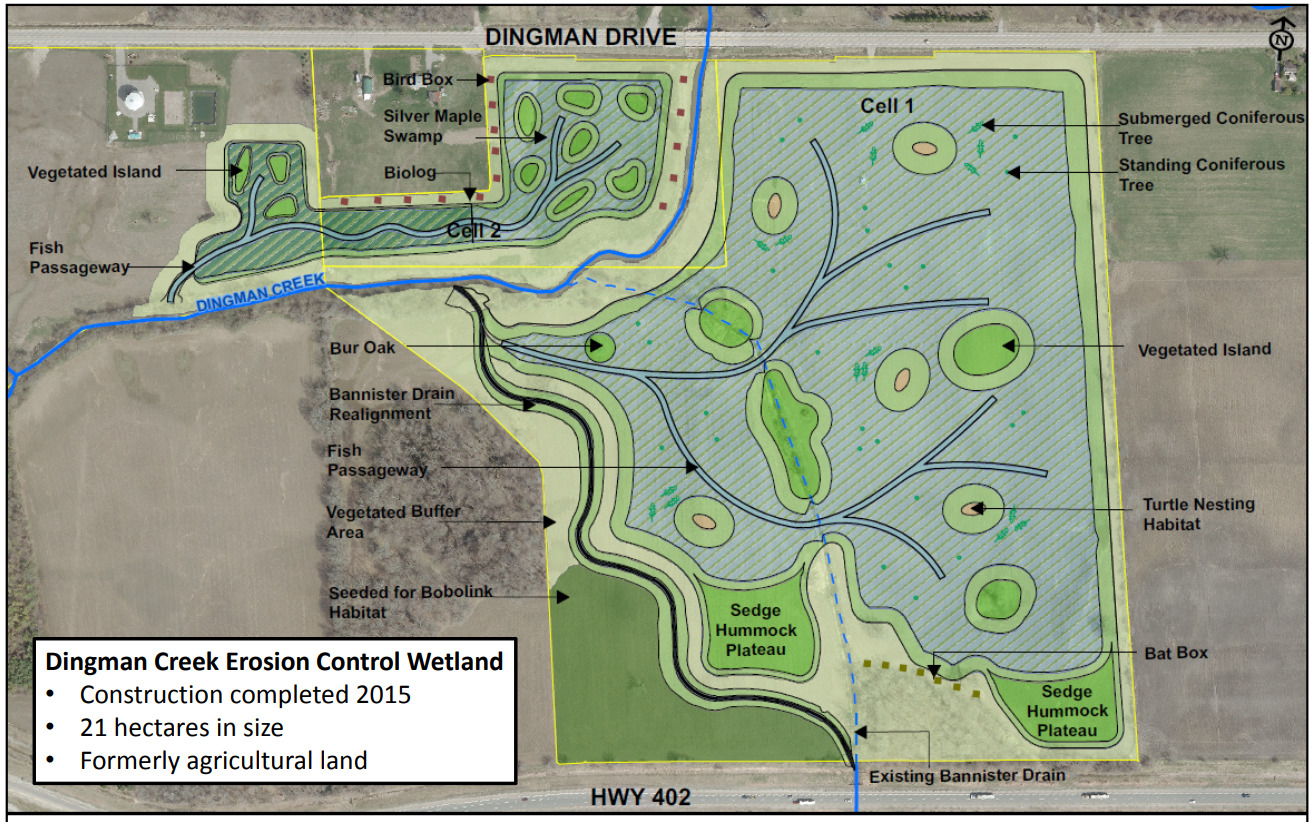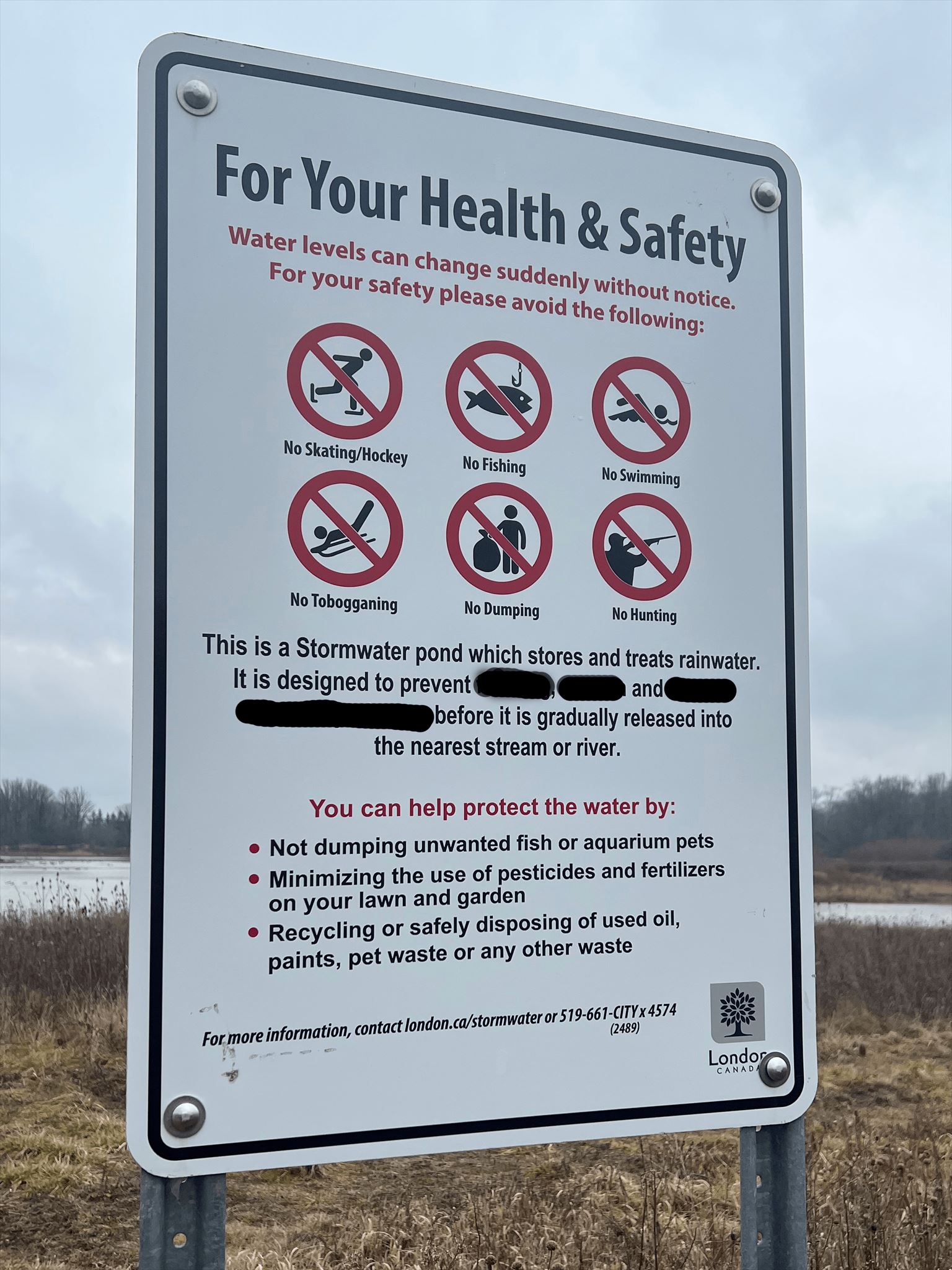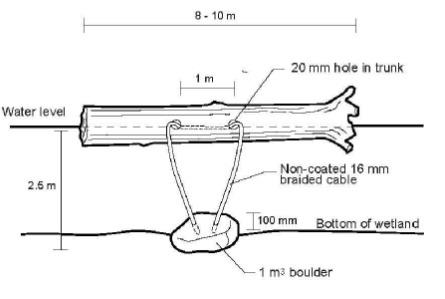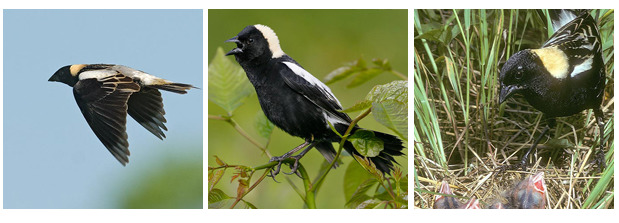An EarthCache is a special geological location people can visit to learn about a unique feature of the Earth. There is no physical geocache container. You must visit the posted coordinates and send me the answers to the below questions in order to log this cache. Some of the answers will be found in the description below. You don't have to wait for approval before logging, just do your best and have fun! 
The coordinates will take you to a parking area and one of the informational signs. The area is open to the public and you are encouraged to explore, however it is possible to obtain all the necessary informtion from outside the gate for accessibility reasons.
Questions
1. The sign at the posted coordinates lists three main purposes of the pond. What are they? [Image 2]
2. If you look to your left, you should see a few logs floating in the water. What do you think there intended purpose is? [Image 3]
3. What wildlife, if any, did you observe on your visit?
4. What is the surface material of the turtle nesting habitats? [Image 4]
5. What is one reason the Bobolink is threatened in Ontario? What is an ideal habitat for them? [Image 5]
6. Which of the following has been created to support the wetland?
- a) bat boxes
- b) fish passageways
- c) sedge hummock plateau
- d) all of the above
(Optional) Share a selfie or picture of yourself at the wetland, or share an image of something else you found interesting in your log!

Image 1: Map of Dingman Creek Erosion Control Wetland
"The wetland was designed to emulate a real-life wetland that doesn't need to be maintained. Among the engineered habitat includes fish passageways, turtle nesting sites, as well as bird and bat boxes" (CBC, 2020).
"...one of the first engineered habitats in Canada that seeks to balance development, flood control and preserving natural habitat in the urban setting" -Shawna Chambers

Image 2: Safety rules and important information

Image 3: Floating log

Image 4: Turtle nesting site

Image 5: Bobolink examples
The Bobolink is a medium sized songbird found in grasslands and hayfields. In their summer breeding season, male Bobolinks are black with a white back and yellow collar. By late summer, males lose their breeding plumage to resemble the female’s tan colour with black stripes.
Bobolinks spend much of their time out of sight on the ground feeding on insects and seeds. They seem to appear out of nowhere and can be spotted flying in the sky or over the tops of vegetation singing a bubbling musical song.
Historically, Bobolinks lived in North American tallgrass prairie and other open meadows. With the clearing of native prairies, Bobolinks moved to living in hayfields.
Bobolinks often build their small nests on the ground in dense grasses. Both parents usually tend to their young, sometimes with a third Bobolink helping.
Bobolink populations have declined considerably over the past half century. As a wide ranging species that migrates in and out of Ontario, there are likely several causes for this decline, and we need to know more about the threats to Bobolink in this province.
- Along their migration route and in their wintering areas in South America, they are considered a pest of grain crops.
- Mowing of hay during the breeding period may inadvertently kill and disturb nesting adults and young birds and destroy eggs and nests.
- Cutting hay in early to mid July coincides with the time that young birds are in the nest and are not able to fly.
- In addition, the quality of Bobolink nesting habitat has likely declined over time due to modern hay production practices such as earlier maturing seed mixtures and shorter crop rotation cycles.
Source: https://www.ontario.ca/page/bobolink
Additional Reading
There are signs south London's 'cutting edge' wetland is working
https://www.cbc.ca/news/canada/london/dingman-creek-wetland-1.5475134
Artificial Dingman Creek wetland provides new home for declining duck population
https://globalnews.ca/news/6581251/artificial-dingman-creek-wetland-ducks/